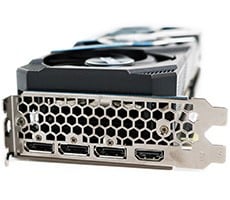AMD Radeon R9 290X Review: Welcome To Hawaii
|
|
|

The Radeon R9 290X's power consumption characteristics are a bit of a mixed bag. At idle, the card is relatively power friendly and consume similar amounts of power to competing products. Under load, however, the Radeon R9 290X consumes the most power of the bunch, in both Quiet and Uber modes.
With power consumption so high, it should come as no surprise that noise and temperatures can be somewhat of an issue. We're not going to dwell on the core temperature, because that can be tweaked easily in PowerTune. Set a max GPU temp of 90'C, and the GPU will ramp up to 90'C.
Noise output, however, is a different matter. With the Radeon R9 290X operating in Quiet mode, its cooling fan won't ramp up past 40% and the card remains relatively quiet, though the pitch from the fan was audible over the other components in our system. With the 290X operating in Uber mode, its fan will ramp up to 55% and is significantly louder. With two cards operating in Uber mode in a CrossFire config, the system is louder still. The cards aren't quite as loud as a pair of 7970s, but they're definitely louder than NVIDIA's high-end cards.






